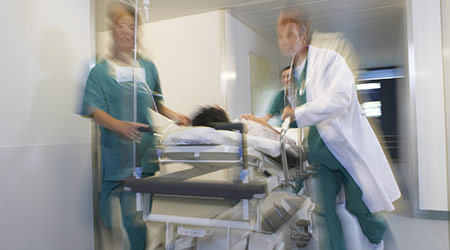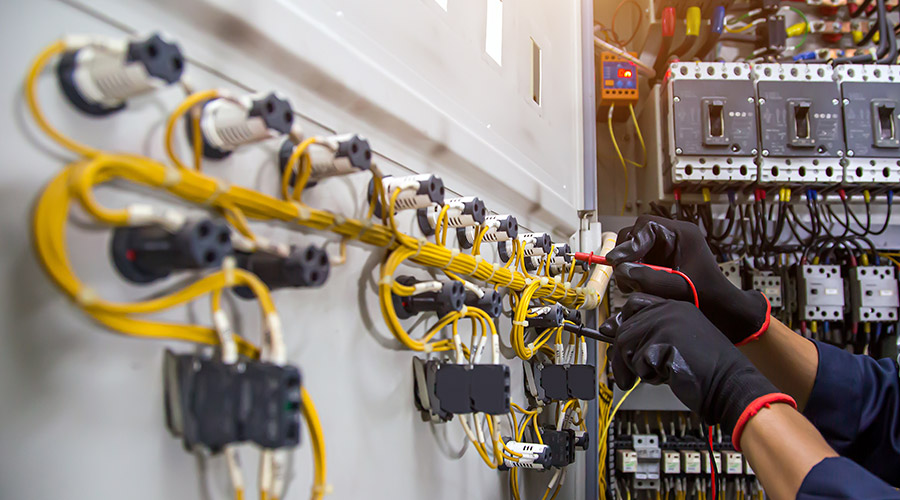The global radio frequency identification (RFID) market for healthcare is expanding at a double-digit rate — and by 2022, it’s estimated to be worth $4.9 billion according to Grand View Research. This explosive growth stems back to the value and efficiency RFID promises to bring to healthcare organizations and the added level of security and safety it promises to bring to patients.
RFID technology —a broad category encompassing many types of smart labels— has potentially limitless applications for driving accuracy and value for the healthcare industry. As hospitals, labs and entire supply chains adopt RFID technologies, they become smarter. They are able to track and trace every blood sample or pallet of medication. They have real-time visibility into inventory. They’re able to monitor the temperature of heat-sensitive drugs throughout the supply chain. In the end, smart labeling provides another layer of visibility, efficiency and, ultimately, patient safety to the healthcare industry.
Examining the value of smart labeling in hospitals
Here we’ll explore two ways RFID labeling can drive value for hospitals, as they represent a great microcosm of the healthcare industry as a whole, with diagnostic testing, movement of samples and pharmaceuticals, medication dispensing and patient care all happening under one roof.
And each of the ways smart labeling benefits hospitals could benefit the entire healthcare industry — every healthcare organization from diagnostics labs to primary care offices to the pharmaceutical supply chain could benefit from end-to-end traceability, improved productivity and better inventory management.
Authentication of pharmaceuticals and samples
Nearly 200,000 patients die in hospitals per year due to medical errors, which could potentially be prevented through more accurate, secure authentication processes. RFID could be the life-saving answer that hospitals are looking for, engineering accuracy into their processes. Smart label technology can be used to track and trace pharmaceuticals and blood samples throughout the hospital to ensure that every patient receives the right diagnosis and the right medication, without fail.
Each RFID tag has a unique identification number, which is assigned to a particular product and input into the hospital’s database — and is far more difficult to duplicate than a barcode. And because some RFID tags can be read as quickly as 700 products per second, accuracy does not come at the price of productivity.
When all medications are RFID tagged, a nurse or doctor can quickly read the tag, verify the authenticity of the product and determine whether it’s being dispensed to the right patient. Beyond the primary goal of preventing patient harm, secure RFID authentication is also an effective way of fighting the widespread counterfeit drug problem.
Improving hospital inventory management with smart cabinets
According to a recent survey, more than three-quarters of hospital staff still rely on inefficient, manual supply chain management and many respondents rated their visibility into inventory as low. And more than half of hospital administrators cited cost management as the key to their organization’s success.
Automating inventory tracking with smart labels and smart cabinets not only streamlines in-hospital supply chain management, but it also aligns with many hospital’s administrative goals — saving money.
Here’s how it works. The moment a medication or product is brought into the hospital, it is tagged with an RFID smart label and put into the hospital’s database. Products are then placed in smart cabinets, which sync with the hospital’s inventory management system. When authorized personnel go to retrieve a product, they can immediately locate in which cabinet and on which shelf the product is. The reader will let them know whether the product they took is the oldest available product — which ensures products get used before they expire. And because the smart cabinets keep a real-time inventory count, fewer labor hours are spent manually counting inventory, re-ordering products and managing expired and recalled products.
This small change to inventory management can have huge budget ramifications. After implementing RFID tracking, Adventist Health White Memorial in Los Angeles, California reduced their manual inventory counting time by 67% and saved an estimated $120,000 per year by using products prior to expiration.
Deploying an RFID solution for your organization
While we’re at the infancy of healthcare and pharmaceutical applications for smart labeling, smart labeling itself is a mature technology. RFID technology is ready today for healthcare organizations to plug into their existing processes to drive productivity, reliability and savings
But the smart labels themselves are a small part of the overall story. A total RFID solution requires the RFID tags, information processing system, readers and software to work in tandem to achieve your desired goal — whether that’s real-time inventory tracking, a more accurate authentication process or any other your organization might have.
If you’re ready to invest in smart labeling technology, reach out to your label manufacturer. They’ll lead the project, coordinating with third-party experts in software, infrastructure and semi-conductor manufacturing to deliver a seamless smart labeling solution tailored to your organization’s goals and needs.
Marsha Frydrychowski leads marketing efforts for Resource Label Group, a full-service label manufacturer with locations throughout the U.S. and in Canada.

 All Eyes on Gen Z as They Enter the Workforce
All Eyes on Gen Z as They Enter the Workforce Cleveland Clinic Starts Fundraising Effort for New Hospital in West Palm Beach
Cleveland Clinic Starts Fundraising Effort for New Hospital in West Palm Beach Cultivating a Workforce in the Face of Skilled Trade Shortages
Cultivating a Workforce in the Face of Skilled Trade Shortages Prime Healthcare Acquires 8 Ascension Hospitals in Illinois
Prime Healthcare Acquires 8 Ascension Hospitals in Illinois Charging Ahead: Incentives Driving EV Charging in Healthcare Facilities
Charging Ahead: Incentives Driving EV Charging in Healthcare Facilities